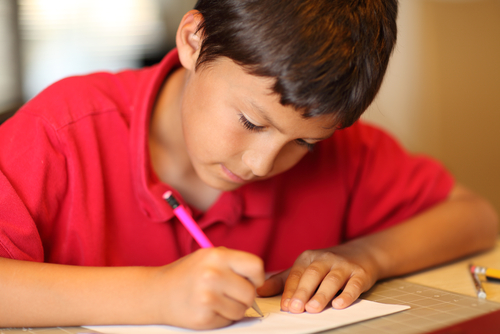It’s the $57 million question. That’s roughly one dollar for each Latino/a living in the United States.
The question — which I seem to be getting asked a lot lately — goes something like this: “What needs to happen for Latino/a students to fulfill their full academic potential?”
The answer has been hard to come by for the last few generations, even to people who work in the educational system.
Correction. Better make that especially to people who work in the educational system.
Not good. America is becoming more Latino by the day. Currently, one in four children in kindergarten is Latino. If this population isn’t better served by our public schools, the whole country will be in great difficulty.
Because my brain works in threes, I’ll tackle the subject from three different angles: My own experience as a student, teacher, and parent; what I’ve learned over the years from studying education, teaching students, and being around educators; and what, as a journalist, I’ve gathered from interviewing current and retired teachers and administrators.
— First, my own experience. I’m the hexagon who wound up at Harvard. In elementary school, I benefited from ability-grouping. My teacher divided up 30 students into five groups of six students each, and assigned each group a shape. There were circles, squares, triangles, rectangles. I was a hexagon, one of the smart kids, and the only Latino in that group. I worked hard over the next six or seven years in the toughest courses available. I became valedictorian and went to Harvard. But one of the reasons I found myself on track to take those difficult courses was because I started out as a hexagon.
After college, I spent five years as a substitute teacher in my old school district, where I saw the plague of low expectations up-close in a way that I never did as a student. It’s amazing what you can pick up in the teacher’s lounge about which students are expected to go to college or which are more likely to wind up in jail. The one big lesson I learned was that the public schools don’t exist for the convenience and benefit of the young people who study there but rather for the convenience and benefit of the adults who work there.
Now, as a parent, my wife and I have learned another lesson: not all children learn the same way, and so they ought not be taught in the same manner. My three kids attended a Montessori charter school for the first several years of their schooling. Today, our 11-year-old son — who needs rules, deadlines, supervision, and consequences — goes to public school. Our daughters — ages 9 and 13 — are being homeschooled by my wife, who is a teacher, and spending part of their week in supervised instruction at a traditional charter school. So far, everyone seems to be going with the flow of their specialized educational approach. Apparently, one size doesn’t fit all.
— Second, given what I’ve learned over the years about educational best practices from experience and research, I always come back to one idea over all others: In order for Latino students to realize their academic potential, all three legs of the stool — parents, students, and teachers — have to be working together and treating one another with respect. Instead of undermining one another, or shifting blame while making excuses for what they’re not doing well, all three entities must work in concert toward the common goal of educating the student. That doesn’t always happen, but it needs to.
— Third, from many years of reporting and listening to educators tell me what works and doesn’t work in reaching and teaching Latino students, I have heard some good ideas. A high school principal told me that the priorities should be early learning at the K-3 level, hiring enough school counselors and psychologists, and finding qualified and well-trained teachers who can learn new tricks. A retired teacher said the secrets were maintaining effective communication between home and school, requiring strict accountability for student performance, and changing how we think about education to the point where we pay teachers more and perhaps even give them low-interest home loans to encourage them to remain in the profession.
For me, helping Latino/a students fulfill their academic potential starts with changing the paradigm. Fifty years ago, if that promise went unfulfilled, it was assumed there was something wrong with the student. Twenty-five years ago, the blame shifted to Latino parents who, according to a vicious lie, didn’t value education. Now it is time to put the blame where it belongs: on the schools, and the people who work there.
Folks like to talk about fixing what’s broken. The schools are what’s broken. Let the fix begin there.
Ruben Navarrette is a contributing editor to Angelus and a syndicated columnist with The Washington Post Writers Group and a columnist for the Daily Beast. He is a radio host, a frequent guest analyst on cable news, and member of the USA Today Board of Contributors and host of the podcast “Navarrette Nation.” Among his books are “A Darker Shade of Crimson: Odyssey of a Harvard Chicano.”
Start your day with Always Forward, our award-winning e-newsletter. Get this smart, handpicked selection of the day’s top news, analysis, and opinion, delivered to your inbox. Sign up absolutely free today!

